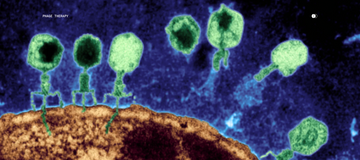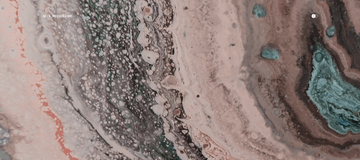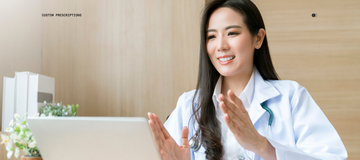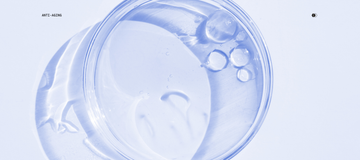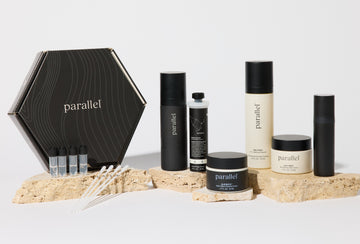Being able to count the number of times I have played poker on one hand, I am most definitely qualified to start this piece off with an anecdote about Texas Hold’em (I promise this will make sense soon!). When playing poker, my strategy oscillates, similar to a sine wave, where the vertical axis represents aggression and the horizontal axis represents time passed.

I start balanced—never raising too hard and folding when the situation calls. After winning a few hands, however, my aggression—along with my betting rate—increases as my fold rate does the opposite. Perhaps this carries on for a few more hands, until I lose big, causing an immediate, further increase in my aggression as I attempt to stem the monetary bleeding by betting harder in an (often futile) attempt to win my money back. Typically, this ends with me silently contemplating my decisions while a small, singular stack of chips stands in front of me. At this point, I have reached the bottom of the sine wave—aggression nonexistent as I attempt to preserve both my dignity and the few chips I have remaining. This cycle repeats until the game ends (most likely leaving me sad and with significantly fewer chips than I started with).
Now, how does this factor into skincare? Well, if we replace the sine wave’s vertical axis label with “skin quality,” and the horizontal axis label with “money spent,” my story with skincare products becomes eerily similar to my poker experience. In the case of my skin, the balanced start from poker is the control state—my skin quality during the first years of high school, before I began using any acne-related skin products.

At the time, I suffered from moderate skin redness, as well as periodical breakouts on my cheeks, nose, forehead, and chin. In my sophomore year, I bought my first acne product, a salicylic acid exfoliant, signifying my rite of passage into the world of mass-produced, impersonal skincare. For around a year, my skin showed improvement, and the breakouts lessened—the upward-sloping section of the sine wave. However, as standardized testing became the focus of my everyday life in junior year— bringing along a wave of unprecedented stress and anxiety—the breakouts returned, and my skin quality rode over the sine wave’s top hump, beginning its gradual decline. This trend continued: through the SAT in August, subject tests in December, and AP exams in May, my skin finally broke past the “balanced” state during final exams in June, entering the negative segment of the sine wave and rendering the exfoliant, which had previously saved my skin, ineffective.
Then began the rightward trek along the sine wave. I spent more money on more acne products: a benzoyl peroxide cleanser, a blackhead removing face wash, an apricot seed exfoliating scrub. All of these products promised change, but none proved true, and I continued to travel southeast on the sine wave.
Every acne product I have ever used has made promises: promises of clearer skin within weeks; promises of smaller pores and reduced blackheads; promises of dazzling complexions. Yet these products never fail to go back on their promises, not only for my skin, but for that of a large proportion of users.
My skin hit its worst point in fall 2020, during my first quarter of college. My generally dormant lifestyle, combined with the stresses of college exams, caused the worst breakouts I had ever seen. A minefield of vivid red pimples, globular zits, and mountainous blackheads clustered upon my cheeks and forehead, to such an extent that I had to use a filter on my face in Zoom calls to look presentable.
I so desperately needed a solution, but only one appeared—to keep trekking rightward—which leaves me where I am today. I bought a new product set: a daily cleanser, a salicylic acid anti-redness solution, and a benzoyl peroxide skin clearing treatment. It’s been around six months, and yet again all the money I have spent has left me with unfulfilled promises.
Today, I still remain far below the “balanced” line, and given the rate of progression it seems questionable whether I will ever reach it with this set of acne products. Yet again, this raises an analogy to poker. Do I play it safe, taking what I can get with the products at my disposal? Or do I play fast and loose, taking a gamble on an even more expensive product set in hopes of northeastern movement along the sine wave, but risking the potential for more false promises and overgeneralizations?
In today’s skincare market, this fallacy seems to occur constantly. A skincare product will claim to work great, just for it to fail a large percent of its target market. Thus, consumers looking to buy acne products are essentially playing a very important game of poker, and while some play their cards correctly, many fail their gamble, causing discouragement and loss of self-esteem. As it turns out, the work that we’re doing here at Parallel has opened up a path in the realm of skincare that does not exist in poker—a safe gamble, so to speak. Everyone’s skin is different; everyone has different strains of bacteria occupying their pores. Whether it’s acne, redness, blackheads, or aging, we aim to create personalized microbial products that work best on your skin and your skin only. Instead of salicylic acid and benzoyl peroxide, we’re using phages and cutting edge DNA sequencing technology. Instead of generalized, mass produced products, we’re customizing skincare like it’s never been before. We are the skin microbiome company. We are the safe gamble. We are Parallel Health.
Have questions or comments? Reach out to us at questions@parallelhealth.io!
You can also sign up to learn more about future studies and personalized products HERE.







